Abstract
A population association has consistently been observed between insulin-dependent diabetes mellitus (IDDM) and the "class 1" alleles of the region of tandem-repeat DNA (5' flanking polymorphism [5'FP]) adjacent to the insulin gene on chromosome 11p. This finding suggests that the insulin gene region contains a gene or genes contributing to IDDM susceptibility. However, several studies that have sought to show linkage with IDDM by testing for cosegregation in affected sib pairs have failed to find evidence for linkage. As means for identifying genes for complex diseases, both the association and the affected-sib-pairs approaches have limitations. It is well known that population association between a disease and a genetic marker can arise as an artifact of population structure, even in the absence of linkage. On the other hand, linkage studies with modest numbers of affected sib pairs may fail to detect linkage, especially if there is linkage heterogeneity. We consider an alternative method to test for linkage with a genetic marker when population association has been found. Using data from families with at least one affected child, we evaluate the transmission of the associated marker allele from a heterozygous parent to an affected offspring. This approach has been used by several investigators, but the statistical properties of the method as a test for linkage have not been investigated. In the present paper we describe the statistical basis for this "transmission test for linkage disequilibrium" (transmission/disequilibrium test [TDT]). We then show the relationship of this test to tests of cosegregation that are based on the proportion of haplotypes or genes identical by descent in affected sibs. The TDT provides strong evidence for linkage between the 5'FP and susceptibility to IDDM. The conclusions from this analysis apply in general to the study of disease associations, where genetic markers are usually closely linked to candidate genes. When a disease is found to be associated with such a marker, the TDT may detect linkage even when haplotype-sharing tests do not.
Full text
PDF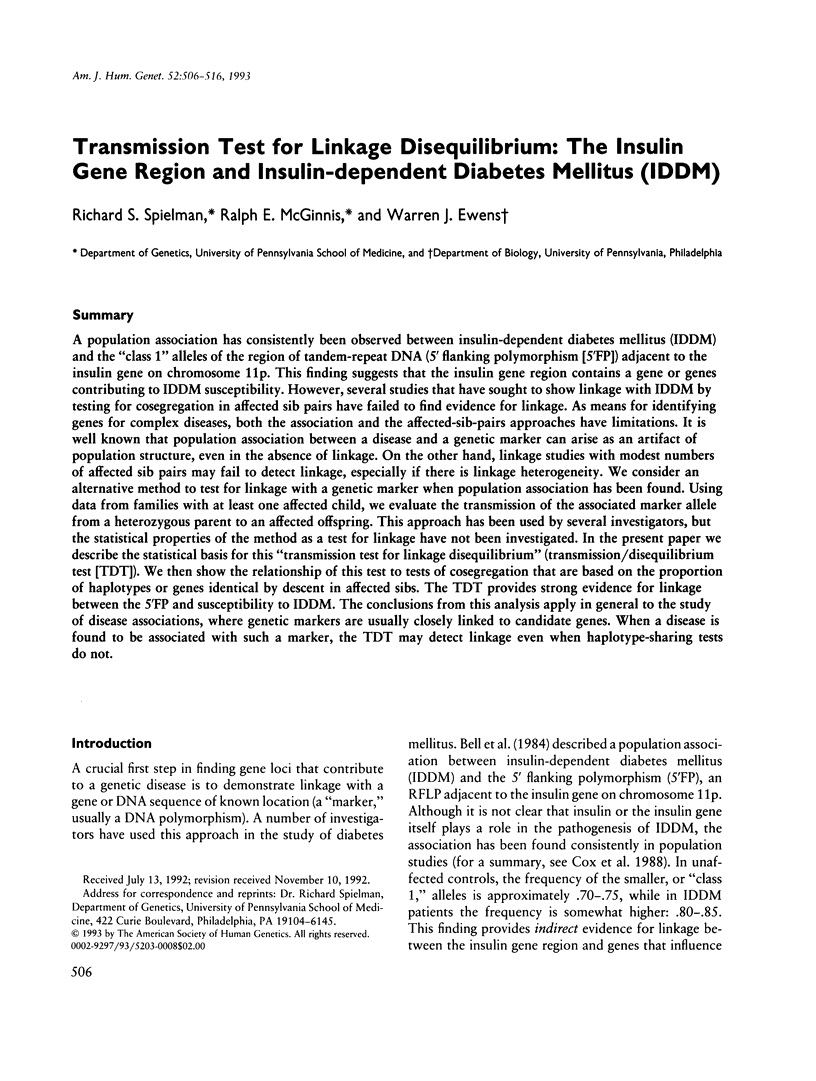
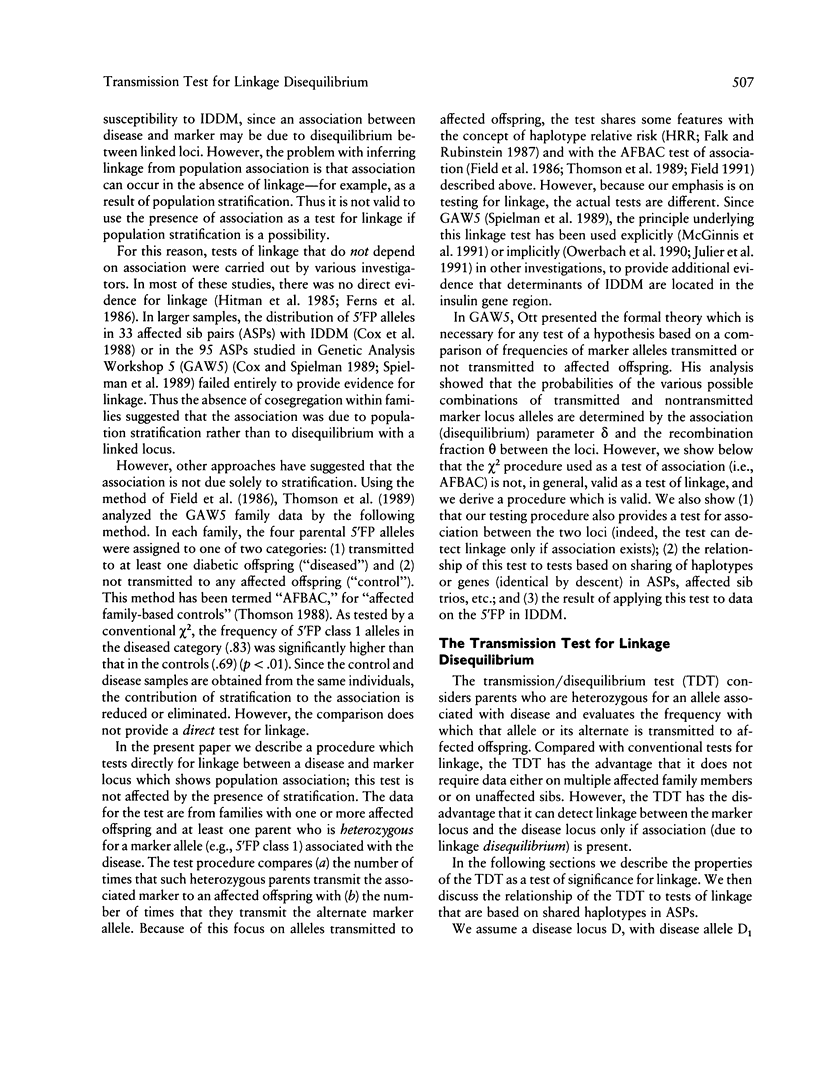
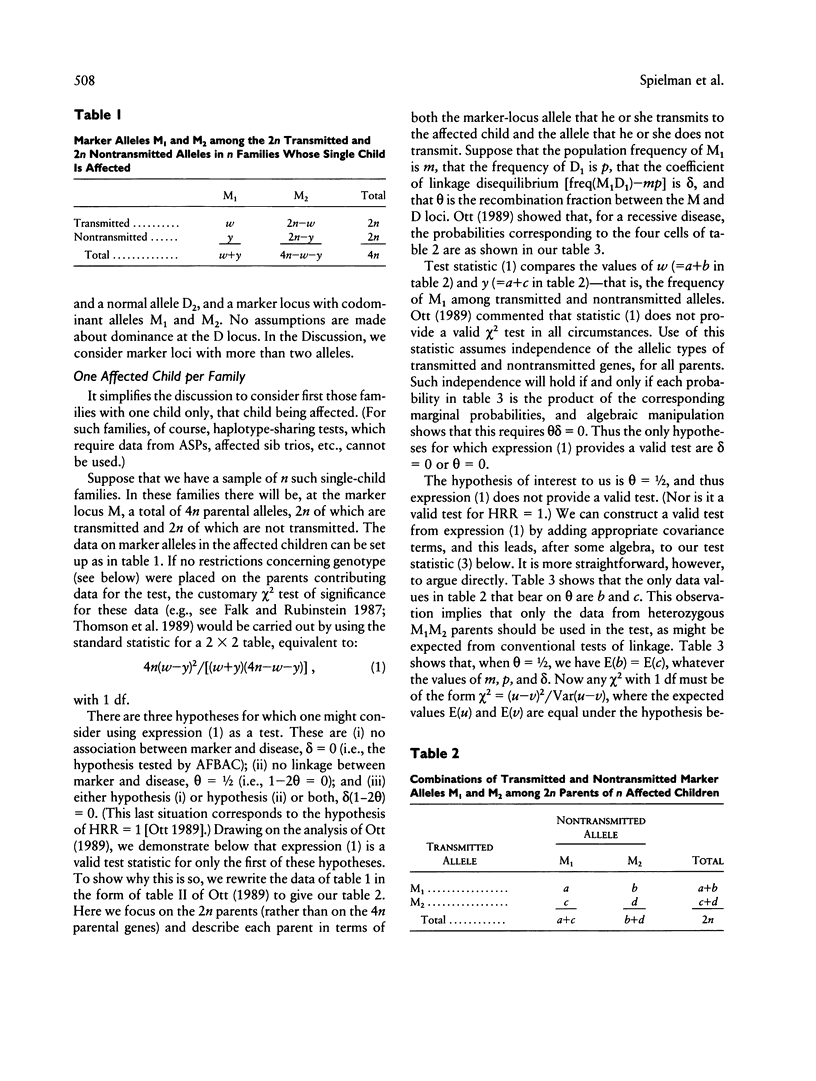

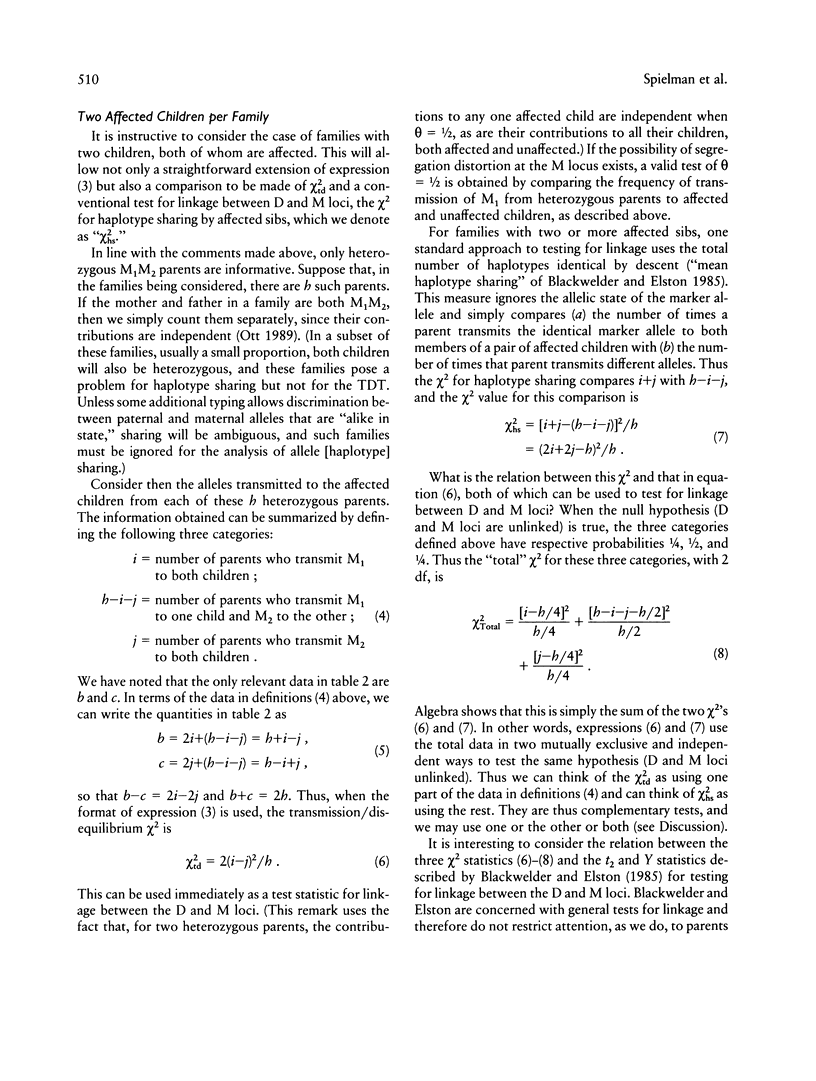
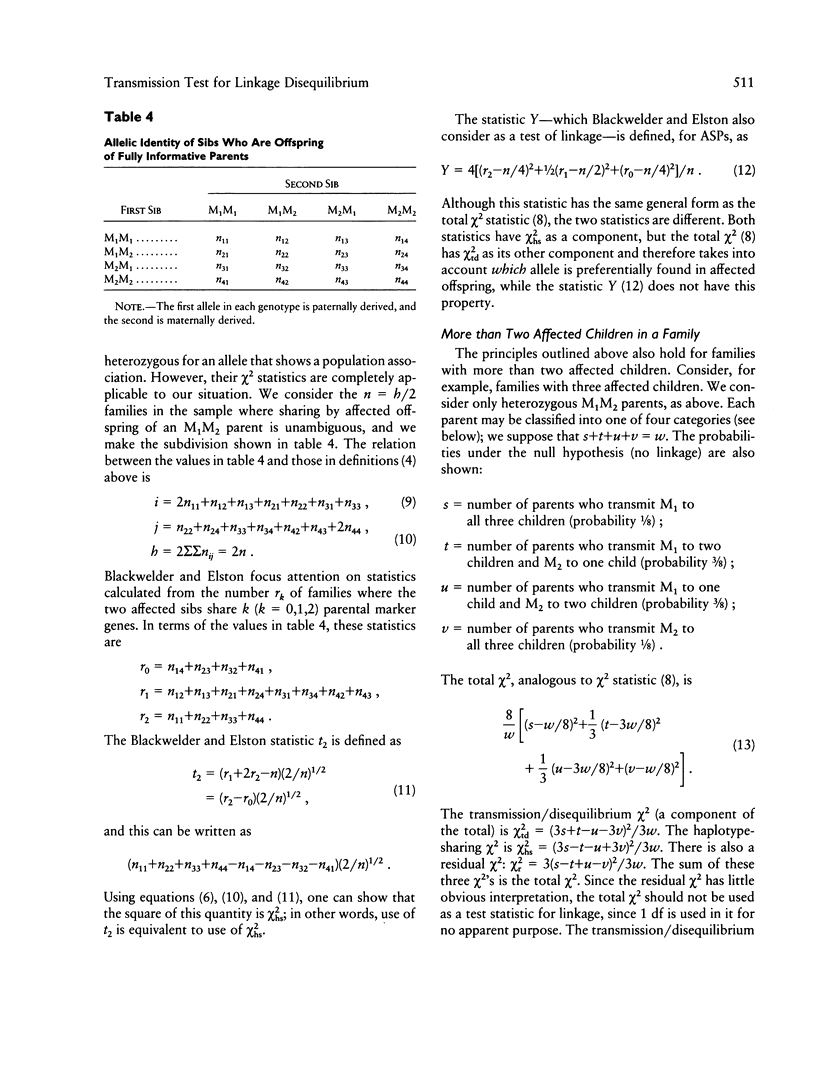
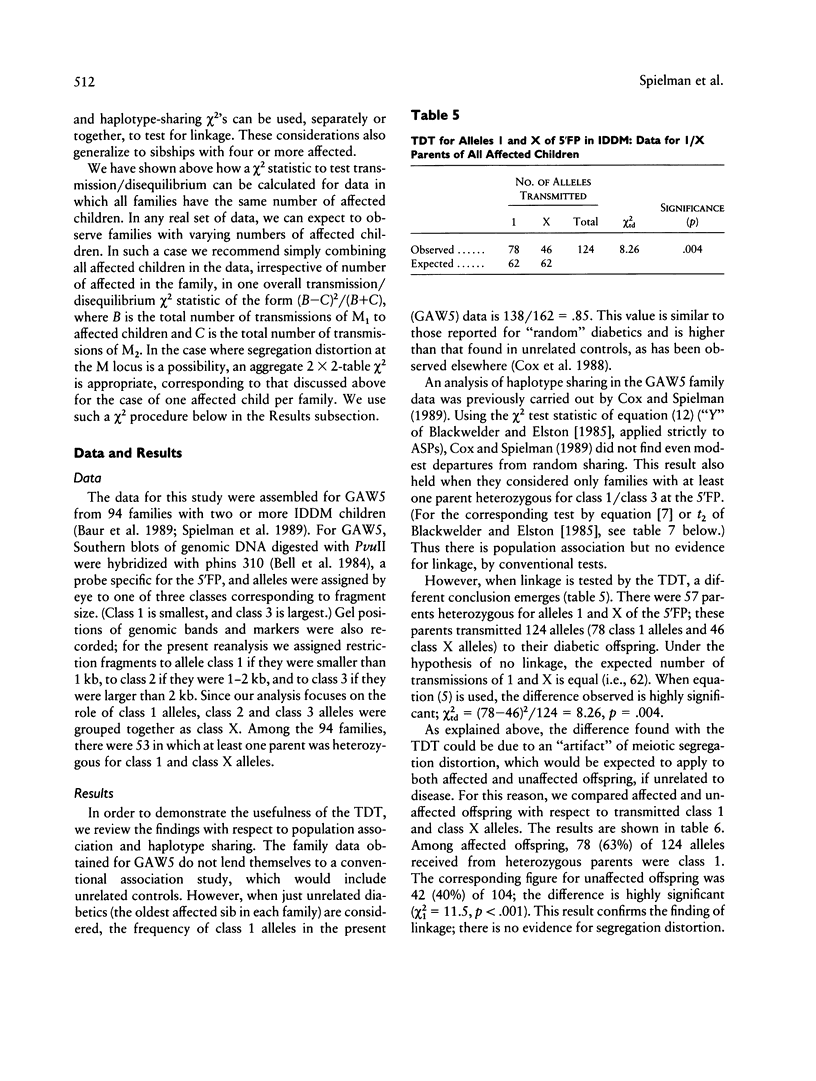
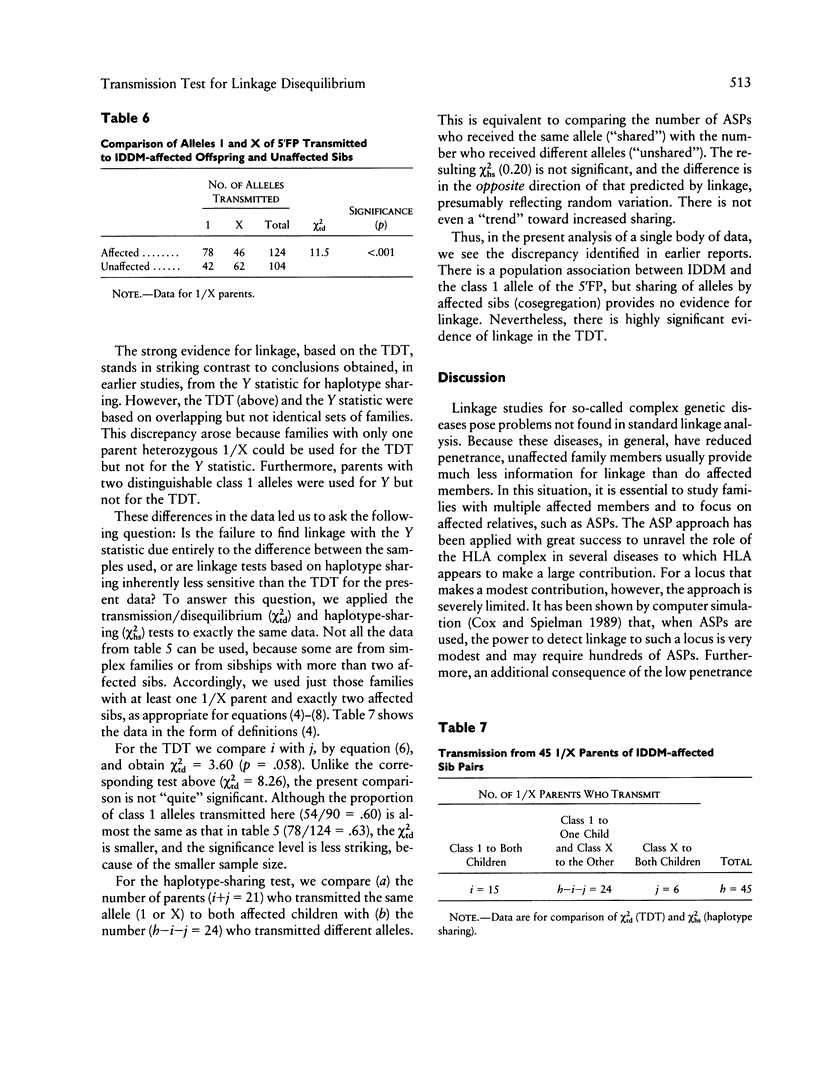
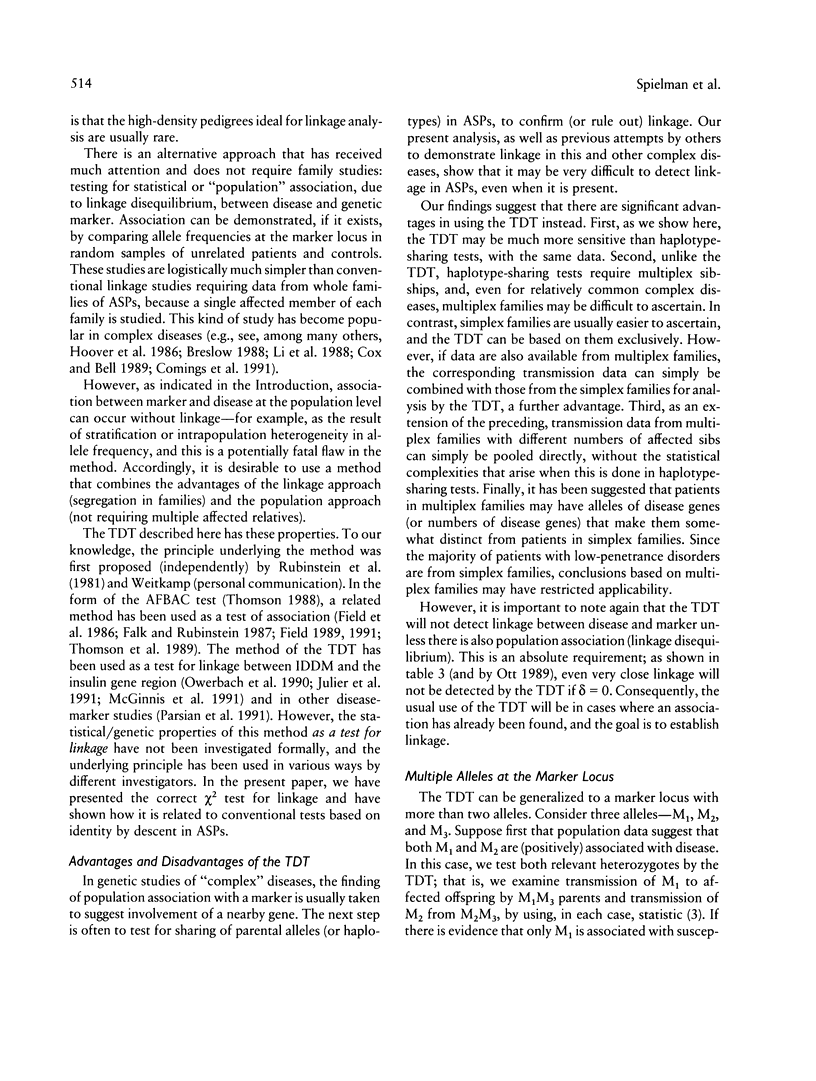
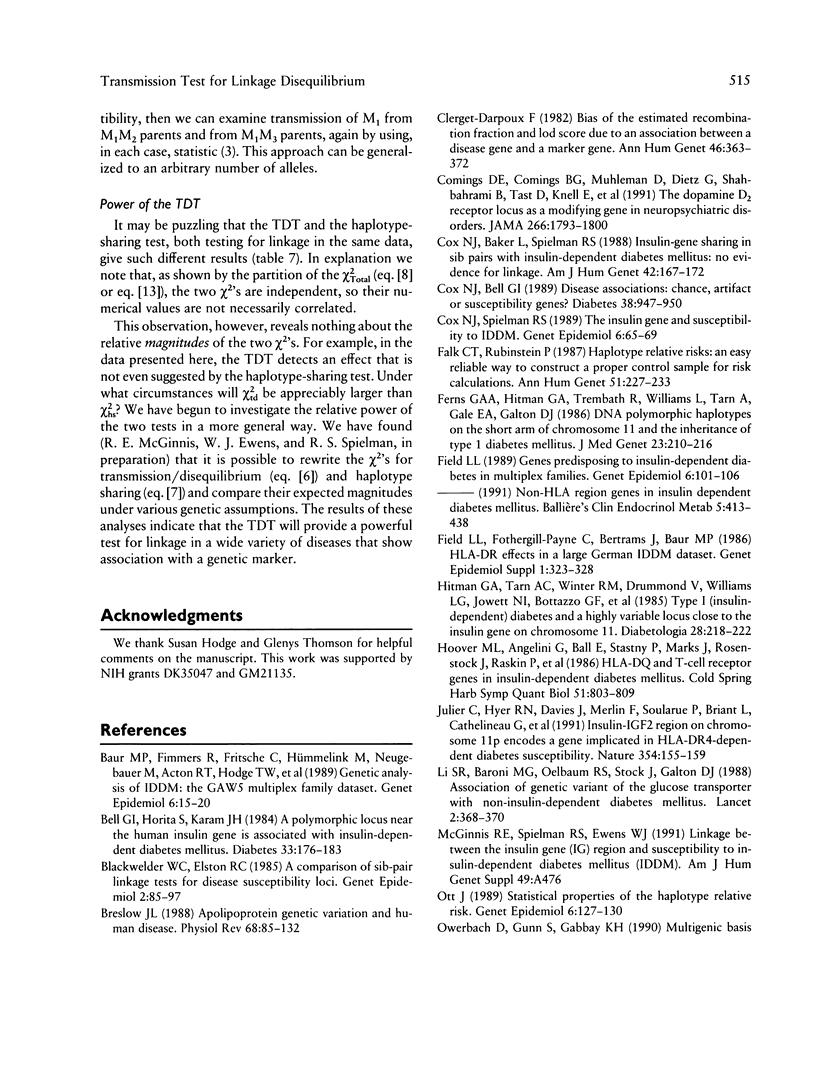
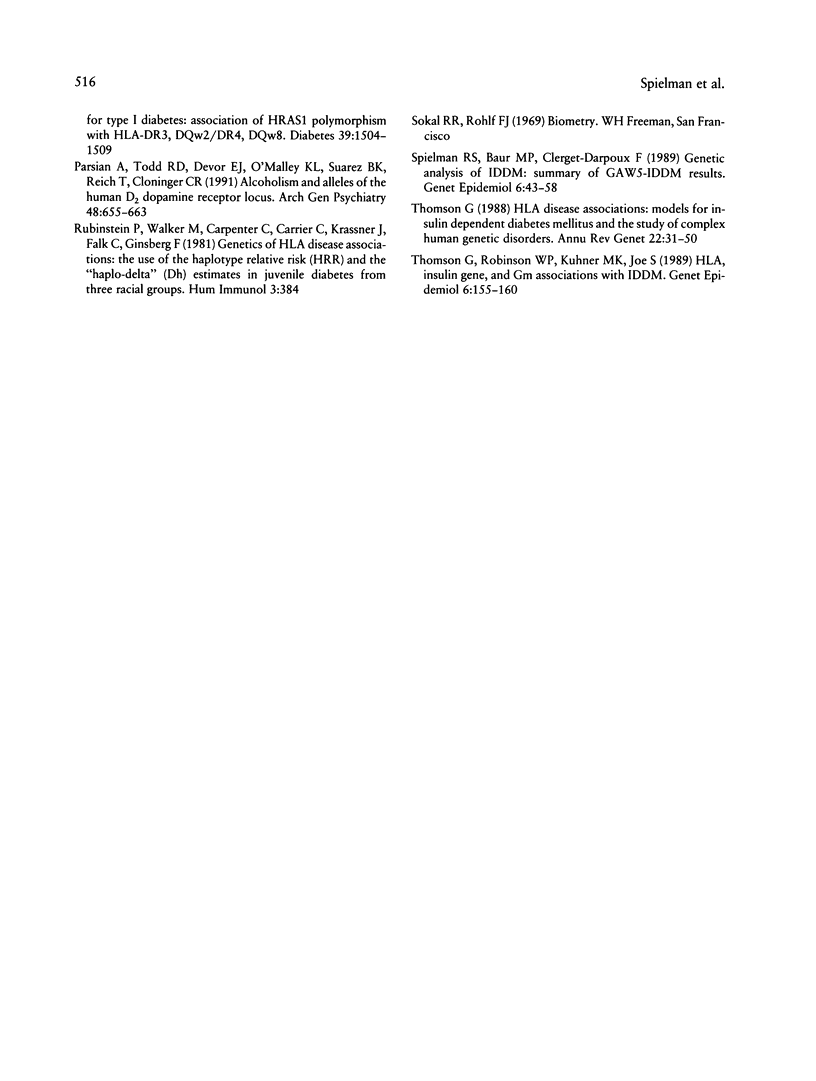
Selected References
These references are in PubMed. This may not be the complete list of references from this article.
- Baur M. P., Fimmers R., Fritsche C., Hümmelink M., Neugebauer M., Acton R. T., Hodge T., Barbosa J., Bertrams J., Fehsel K. Genetic analysis of IDDM: the GAW5 multiplex family dataset. Genet Epidemiol. 1989;6(1):15–20. doi: 10.1002/gepi.1370060105. [DOI] [PubMed] [Google Scholar]
- Bell G. I., Horita S., Karam J. H. A polymorphic locus near the human insulin gene is associated with insulin-dependent diabetes mellitus. Diabetes. 1984 Feb;33(2):176–183. doi: 10.2337/diab.33.2.176. [DOI] [PubMed] [Google Scholar]
- Blackwelder W. C., Elston R. C. A comparison of sib-pair linkage tests for disease susceptibility loci. Genet Epidemiol. 1985;2(1):85–97. doi: 10.1002/gepi.1370020109. [DOI] [PubMed] [Google Scholar]
- Breslow J. L. Apolipoprotein genetic variation and human disease. Physiol Rev. 1988 Jan;68(1):85–132. doi: 10.1152/physrev.1988.68.1.85. [DOI] [PubMed] [Google Scholar]
- Clerget-Darpoux F. Bias of the estimated recombination fraction and lod score due to an association between a disease gene and a marker gene. Ann Hum Genet. 1982 Oct;46(Pt 4):363–372. doi: 10.1111/j.1469-1809.1982.tb01587.x. [DOI] [PubMed] [Google Scholar]
- Comings D. E., Comings B. G., Muhleman D., Dietz G., Shahbahrami B., Tast D., Knell E., Kocsis P., Baumgarten R., Kovacs B. W. The dopamine D2 receptor locus as a modifying gene in neuropsychiatric disorders. JAMA. 1991 Oct 2;266(13):1793–1800. [PubMed] [Google Scholar]
- Cox N. J., Baker L., Spielman R. S. Insulin-gene sharing in sib pairs with insulin-dependent diabetes mellitus: no evidence for linkage. Am J Hum Genet. 1988 Jan;42(1):167–172. [PMC free article] [PubMed] [Google Scholar]
- Cox N. J., Bell G. I. Disease associations. Chance, artifact, or susceptibility genes? Diabetes. 1989 Aug;38(8):947–950. doi: 10.2337/diab.38.8.947. [DOI] [PubMed] [Google Scholar]
- Cox N. J., Spielman R. S. The insulin gene and susceptibility to IDDM. Genet Epidemiol. 1989;6(1):65–69. doi: 10.1002/gepi.1370060113. [DOI] [PubMed] [Google Scholar]
- Falk C. T., Rubinstein P. Haplotype relative risks: an easy reliable way to construct a proper control sample for risk calculations. Ann Hum Genet. 1987 Jul;51(Pt 3):227–233. doi: 10.1111/j.1469-1809.1987.tb00875.x. [DOI] [PubMed] [Google Scholar]
- Ferns G. A., Hitman G. A., Trembath R., Williams L., Tarn A., Gale E. A., Galton D. J. DNA polymorphic haplotypes on the short arm of chromosome 11 and the inheritance of type I diabetes mellitus. J Med Genet. 1986 Jun;23(3):210–216. doi: 10.1136/jmg.23.3.210. [DOI] [PMC free article] [PubMed] [Google Scholar]
- Field L. L., Fothergill-Payne C., Bertrams J., Baur M. P. HLA-DR effects in a large German IDDM dataset. Genet Epidemiol Suppl. 1986;1:323–328. doi: 10.1002/gepi.1370030749. [DOI] [PubMed] [Google Scholar]
- Field L. L. Genes predisposing to IDDM in multiplex families. Genet Epidemiol. 1989;6(1):101–106. doi: 10.1002/gepi.1370060119. [DOI] [PubMed] [Google Scholar]
- Hitman G. A., Tarn A. C., Winter R. M., Drummond V., Williams L. G., Jowett N. I., Bottazzo G. F., Galton D. J. Type 1 (insulin-dependent) diabetes and a highly variable locus close to the insulin gene on chromosome 11. Diabetologia. 1985 Apr;28(4):218–222. doi: 10.1007/BF00282236. [DOI] [PubMed] [Google Scholar]
- Hoover M. L., Angelini G., Ball E., Stastny P., Marks J., Rosenstock J., Raskin P., Ferrara G. B., Tosi R., Capra J. D. HLA-DQ and T-cell receptor genes in insulin-dependent diabetes mellitus. Cold Spring Harb Symp Quant Biol. 1986;51(Pt 2):803–809. doi: 10.1101/sqb.1986.051.01.093. [DOI] [PubMed] [Google Scholar]
- Julier C., Hyer R. N., Davies J., Merlin F., Soularue P., Briant L., Cathelineau G., Deschamps I., Rotter J. I., Froguel P. Insulin-IGF2 region on chromosome 11p encodes a gene implicated in HLA-DR4-dependent diabetes susceptibility. Nature. 1991 Nov 14;354(6349):155–159. doi: 10.1038/354155a0. [DOI] [PubMed] [Google Scholar]
- Li S. R., Baroni M. G., Oelbaum R. S., Stock J., Galton D. J. Association of genetic variant of the glucose transporter with non-insulin-dependent diabetes mellitus. Lancet. 1988 Aug 13;2(8607):368–370. doi: 10.1016/s0140-6736(88)92836-x. [DOI] [PubMed] [Google Scholar]
- Ott J. Statistical properties of the haplotype relative risk. Genet Epidemiol. 1989;6(1):127–130. doi: 10.1002/gepi.1370060124. [DOI] [PubMed] [Google Scholar]
- Owerbach D., Gunn S., Gabbay K. H. Multigenic basis for type I diabetes. Association of HRAS1 polymorphism with HLA-DR3, DQw2/DR4, DQw8. Diabetes. 1990 Dec;39(12):1504–1509. doi: 10.2337/diab.39.12.1504. [DOI] [PubMed] [Google Scholar]
- Parsian A., Todd R. D., Devor E. J., O'Malley K. L., Suarez B. K., Reich T., Cloninger C. R. Alcoholism and alleles of the human D2 dopamine receptor locus. Studies of association and linkage. Arch Gen Psychiatry. 1991 Jul;48(7):655–663. doi: 10.1001/archpsyc.1991.01810310073013. [DOI] [PubMed] [Google Scholar]
- Spielman R. S., Baur M. P., Clerget-Darpoux F. Genetic analysis of IDDM: summary of GAW5 IDDM results. Genet Epidemiol. 1989;6(1):43–58. doi: 10.1002/gepi.1370060111. [DOI] [PubMed] [Google Scholar]
- Thomson G. HLA disease associations: models for insulin dependent diabetes mellitus and the study of complex human genetic disorders. Annu Rev Genet. 1988;22:31–50. doi: 10.1146/annurev.ge.22.120188.000335. [DOI] [PubMed] [Google Scholar]
- Thomson G., Robinson W. P., Kuhner M. K., Joe S., Klitz W. HLA and insulin gene associations with IDDM. Genet Epidemiol. 1989;6(1):155–160. doi: 10.1002/gepi.1370060129. [DOI] [PubMed] [Google Scholar]


